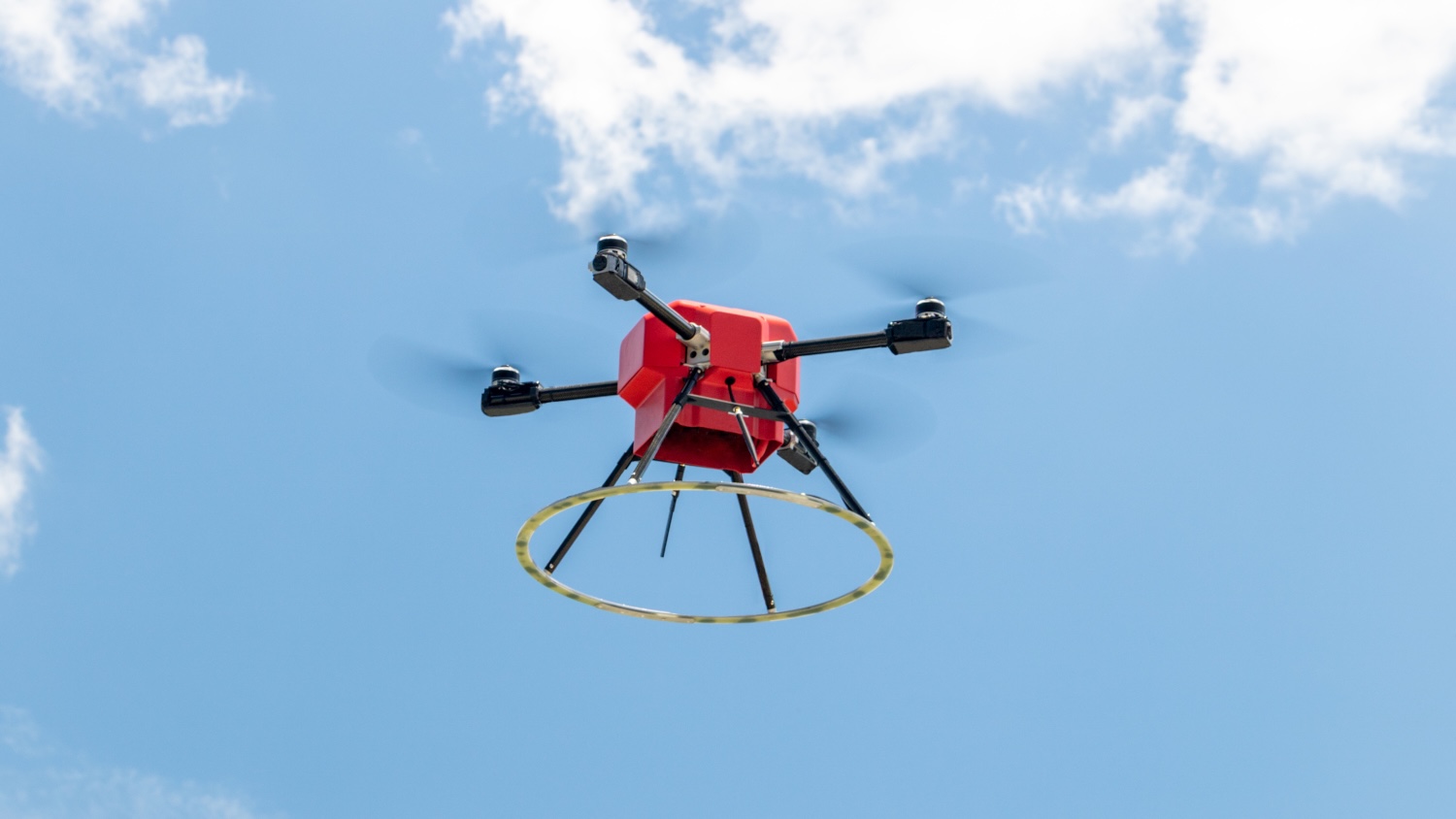
The Federal Aviation Administration has given final approval to a Massachusetts based company to conduct autonomous commercial drone flights.
In a press release Friday night, American Robotics Inc., based in Marlborough, Massachusetts, said it has been approved for operation for its Scout System drones, including for operation “beyond-visual-line-of-sight” (BVLOS) of the operator.
“With these approvals, American Robotics is ushering in a new era of widespread automated drone operations,” said Reese Mozer, CEO and co-founder of American Robotics. “Decades worth of promise and projection are finally coming to fruition. We are proud to be the first company to meet the FAA’s comprehensive safety requirements, which had previously restricted the viability of drone use in the commercial sector.”
The Scout System features three components – the Scout drone, the Scoutbase, and Scoutview. According to the company, which has been testing the system for more than four years, the Scout System incorporates everything from landing to charging to data processing.
An operator monitors and controls the drone through Scoutview, a front-end fleet management and analytics software that enables remote interaction with the system. The real-time analytics provides accurate information, allowing users to track operations at a resolution and frequency not previously possible, the company claims.
“We are very grateful for the FAA’s willingness to work closely with American Robotics over the past four years on this precedent-setting authorization. With this set of approvals, American Robotics can begin safely operating our automated Scout platform for the benefit of the energy, infrastructure, agriculture, and security market verticals, helping unlock the projected $100 billion commercial drone market,” Mozer said.
Sold as a Robot-as-a-Service platform as a monthly subscription, the Scout’s autonomous system allows a user to monitor a single drone, or multiple drones, at distances up to 1,000 miles.
The Scoutbase is the base station that serves as a communication hub for the Scout drone. It houses and charges the Scout while collecting and transmitting the data from each flight to American Robotics’ data centers.
In a letter to American Robotics on Friday, which was in response to an exemption petition filed by the company on Sept. 20, 2019, the FAA approved a waiver to the visual line of sight for aircraft operation. The waiver is good until Jan. 31, 2023.
The waiver requires the company to issue a Notice to Airmen that includes location, altitude, operational area and time and nature of the activity not less than 24 hours in advance of any drone flight and must not be made within two nautical miles of an airport.
The Wall Street Journal reported Friday night that the FAA ruling will allow American Robotics to fly the drones along pre-set routes in rural areas and at altitudes below 400 feet.
“We are very grateful for the FAA’s willingness to work closely with American Robotics over the past four years on this precedent-setting authorization. With this set of approvals, American Robotics can begin safely operating our automated Scout platform for the benefit of the energy, infrastructure, agriculture, and security market verticals, helping unlock the projected $100 billion commercial drone market,” Mozer said.
Sold as a Robot-as-a-Service platform as a monthly subscription, the Scout’s autonomous system allows a user to monitor a single drone, or multiple drones, at distances up to 1,000 miles.
The Scoutbase is the base station that serves as a communication hub for the Scout drone. It houses and charges the Scout while collecting and transmitting the data from each flight to American Robotics’ data centers.
In a letter to American Robotics on Friday, which was in response to an exemption petition filed by the company on Sept. 20, 2019, the FAA approved a waiver to the visual line of sight for aircraft operation. The waiver is good until Jan. 31, 2023.
The waiver requires the company to issue a Notice to Airmen that includes location, altitude, operational area and time and nature of the activity not less than 24 hours in advance of any drone flight and must not be made within two nautical miles of an airport.
The Wall Street Journal reported Friday night that the FAA ruling will allow American Robotics to fly the drones along pre-set routes in rural areas and at altitudes below 400 feet.
American Robotics has been testing the drones in several applications, including in agricultural uses.
“Our interest in American Robotics’ technology started with the desire to have a drone imagery solution that was reliable, scalable, and executed with minimal human resources,” said Lance Ruppert, director of Agronomy Marketing and Technology at Growmark, Inc., a leading U.S. grower cooperative. “This technology, along with the FAA approvals to operate it without humans on the ground, is key to making drones a widespread reality in our industry. This is a game changer.”
Lisa Ellman, partner and chair of the Global UAS Practice at Hogan Lovells, and executive director of the Commercial Drone Alliance, said the FAA approval is an important step forward for the drone industry.
“The commercial drone industry is growing quickly and providing significant benefits to the American public but enabling expanded operations beyond visual line of sight is critical for the industry to truly take off,” she said. “Automated BVLOS operations are particularly important to opening the commercial sectors to the drone economy, including the agriculture and industrial verticals. Key to these operations is the use and FAA acceptance of new and innovative safety technologies, such as detect and avoid (DAA) sensors and software-enabled automation. American Robotics’ groundbreaking and exciting FAA approval is an important and significant step forward for the commercial drone community as a whole.”
